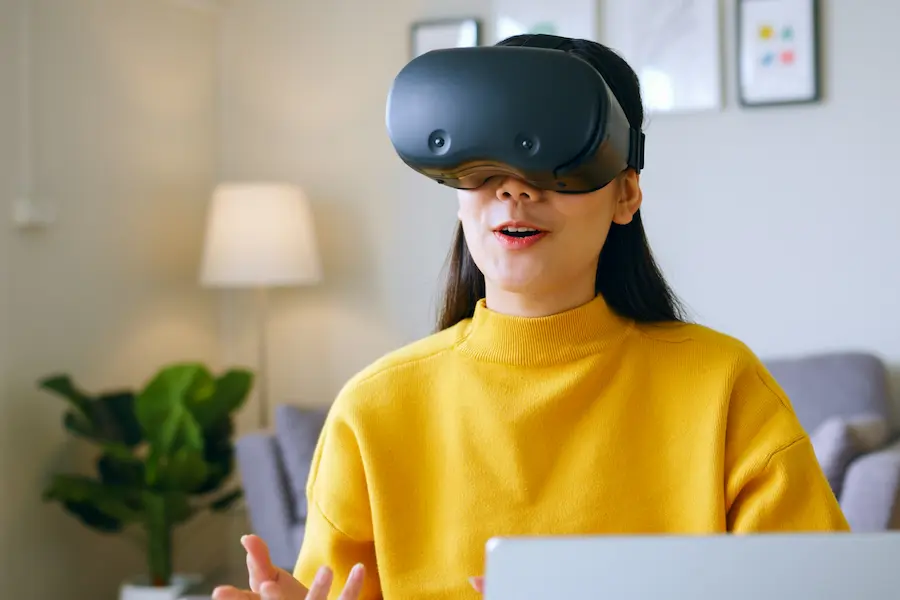3D eCommerce is transforming the way we shop online, providing a richer, more interactive experience. Unlike traditional 3D product models, 3D eCommerce allows customers to interact with digital models, enhancing their understanding of the product. This technology has become a cornerstone for businesses aiming to stand out in the competitive online market. By combining advanced 3D visualization tools and innovative platforms, businesses can create experiences that engage and convert. As consumer expectations evolve, integrating 3D capabilities into your eCommerce strategy is no longer optional but essential. This guide dives into what 3D eCommerce entails, how it operates, and the key advantages and challenges it brings to businesses.
3D eCommerce is a rapidly changing industry that’s completely transforming the way we shop online. By using the processes of 3D modeling and virtual reality, businesses can provide customers with a more immersive and interactive shopping experience. This can lead to improved sales and customer satisfaction metrics.
Key takeaways
- 3D eCommerce provides a more immersive shopping experience by using 3D modeling and 3D visualization tools.
- Businesses see higher conversion rates and fewer product returns with 3D eCommerce technology.
- Technologies like augmented reality (AR) and virtual reality (VR) enable customers to interact with products in innovative ways.
- Challenges include higher costs and the need for specialized knowledge.
- 3D Source can assist businesses in integrating 3D solutions effectively.
What is 3D eCommerce?
3D eCommerce enables businesses to present products as three-dimensional digital models, making it easier for customers to understand product details. This advanced approach transforms online shopping from static images to interactive experiences, letting users explore products from multiple angles. By using tools like augmented reality (AR), customers can place digital products into their physical spaces to see how they would fit or look. For example, a buyer can visualize how a piece of furniture will look in their living room before purchasing. This fusion of virtual interaction and real-world application improves decision-making and customer satisfaction.
With its ability to replicate real-world shopping experiences, 3D eCommerce appeals to modern consumers seeking more engaging and reliable online shopping options. Whether it’s clothing, furniture, or electronics, this technology bridges the gap between physical and digital retail.
How does 3D eCommerce work?
3D eCommerce connects the physical and digital shopping experiences in a way that allows customers to interact with products in a more realistic way. This technology uses advanced 3D modeling and immersive digital platforms to create a seamless and engaging shopping experience.
By creating detailed 3D models of products, businesses can offer customers a more comprehensive view. These models can be rotated, zoomed in on, and explored from different angles. This level of detail helps customers make more informed purchasing decisions.

Furthermore, technologies like augmented reality and virtual reality are taking 3D eCommerce to the next level. With AR, customers can virtually try on clothes, test furniture in their homes, and more. VR offers even more immersive experiences, allowing customers to explore virtual showrooms and interact with products as if they were physically present.
By combining these elements, 3D eCommerce enhances the overall shopping experience. Customers can visualize products, experience them firsthand, and make confident purchasing decisions. This leads to increased customer satisfaction and loyalty.
Why is 3D eCommerce important?
The importance of 3D eCommerce is rooted in its ability to bridge the gap between the physical and digital shopping experience. Traditional online shopping often falls short in helping customers fully understand a product. With 3D eCommerce, users can interact with products, rotate them, and view intricate details. This not only enhances the shopping experience but also builds trust in the product’s quality.

Moreover, as the global adoption of AR and VR grows, businesses that leverage 3D eCommerce are positioned to meet and exceed consumer expectations. The added interactivity drives higher engagement and boosts the likelihood of conversion. A recent study showed that B2C revenue is expected to grow at a yearly rate of 14.4% until 2027. In a digital-first world, offering innovative solutions like 3D eCommerce can significantly impact a brand’s ability to attract and retain customers.
Benefits of 3D eCommerce
The benefits of 3D eCommerce are extensive, offering value to both businesses and customers. Here are some key advantages:
-
Improved customer engagement: Interactive 3D models keep users on product pages longer, increasing the chances of conversion. Customers feel more confident about their purchases, reducing hesitation and leading to higher customer satisfaction.
-
Higher conversion rates: Detailed and interactive visuals make products more appealing, leading to higher sales. Businesses which use 3D eCommerce have reported great results in conversion metrics, as customers are more likely to make a purchase when they can visualize the product in detail.
-
Reduced returns: When customers have a better view of a product, they are less likely to return it. AR tools help buyers confirm product dimensions, colors, and styles before completing a purchase, reducing the number of returns and saving businesses time and money.
-
Customization options: Some 3D eCommerce tools allow customers to fully customize 3D models of products. For example, customers can change models, colors, and product materials and see their changes represented in real-time.
-
Pre-market testing: Businesses can present 3D prototypes to clients or investors before production. Early feedback helps refine designs and reduce manufacturing risks, saving businesses time and money.
By applying these benefits, eCommerce businesses can create a shopping experience that not only satisfies customers but also drives measurable growth.
Challenges of 3D eCommerce
Despite its many advantages, 3D eCommerce also presents several challenges that businesses must address:
-
Time and cost: Developing high-quality 3D models and implementing AR/VR tools requires significant investment in both time and money. Businesses with extensive product catalogs may face higher costs for digitization, as each product needs to be modeled individually.
-
Technical barriers: Large 3D files can slow down website performance if not optimized properly. Not all customers have devices capable of handling AR or VR experiences, which can limit the reach of 3D eCommerce.
-
User education: Many consumers are unfamiliar with 3D technologies and may need guidance on how to use them. Providing tutorials or demonstrations can mitigate this challenge and enhance user experience.
-
Security concerns: As 3D eCommerce involves sharing detailed product information, businesses must be aware of potential security risks, such as data breaches and intellectual property theft.
-
Accessibility: 3D content may not be instantly accessible to all users, particularly those with disabilities. Businesses must invest time and money to make sure that their 3D content is accessible to all users, regardless of their abilities.
By addressing these challenges strategically, businesses can maximize the benefits of 3D eCommerce while minimizing potential drawbacks. A proactive approach to problem-solving ensures smoother adoption and better results.
Should you use 3D eCommerce?
3D eCommerce is revolutionizing the way we shop online. By offering immersive and interactive experiences, this technology is transforming the traditional eCommerce landscape. With 3D product models, augmented reality, and virtual reality, customers can explore products from every angle, try them on virtually, and even experience them in virtual showrooms. This level of engagement has been found to lead to higher customer satisfaction, increased sales, and reduced returns. Businesses can also benefit from visual commerce by gaining valuable insights into customer preferences and behaviors.
By using 3D eCommerce, businesses can create a more engaging and personalized shopping experience. This can lead to increased customer loyalty and brand awareness. Additionally, 3D eCommerce can help eCommerce businesses reduce costs by reducing the need for physical product samples and returns. Ready to take your online store to the next level? 3D Source can help you harness the power of 3D technology. Contact us today to learn how we can help you create a more engaging and immersive shopping experience for your customers.





